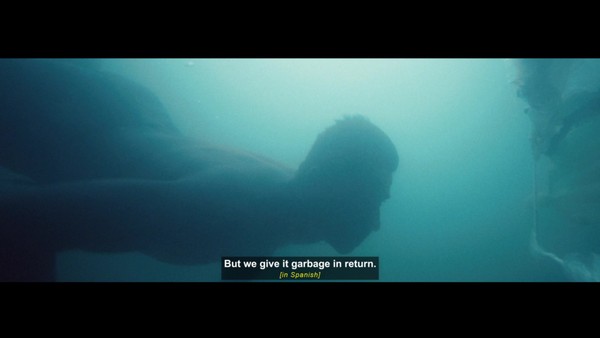Sustainable Development Goals > Prosperity
NAMING THE INVISIBLE BY DIGITAL BIRTH REGISTRATION
TELENOR PAKISTAN, Islamabad / TELENOR / 2022

Overview
Credits
OVERVIEW
Background
UNCRC states that “every child in this world has a right to a name and nationality”. One’s national identity is crucial to social, political, and economic inclusion. It’s a child’s passport to protection against underage labor, child marriages & trafficking. Despite this 60 million Pakistanis lacked an official identity and were devoid of a basic human right.
BRIEF
Telenor empowers societies by connecting customers to what matters most. To further this ambition of digital inclusion under UN SDGs #10: ‘Reduce Inequalities’ it wanted to leverage its transformative technology to make Pakistan a safer place for children.
OBJECTIVES
• Expand DBR to 36 villages in Pakistan and register 500K children.
• Reduce application time to 240 mins from 4320 mins (72 hrs).
• Improve Telenor’s perception as a brand with a positive impact in Pakistan, tracked by the BHT
• Increase subscriber-base in 9 districts of Sindh & Punjab by 10%
Describe the cultural / social / political climate and the significance of the work within this context
The World Bank (WB) has estimated that poverty in Pakistan has increased from 4.4% to 5.4% in 2020. Over two million people have fallen below the poverty line and 1/4th of the country’s workforce is made up of child labor (ILO) as they have little means to an education. Reportedly, 22.6 million children aged 5-16 are currently out-of-school (GSMA/UN).
In Pakistan’s rural communities, people are less likely to feel a need for formal identity, as they have less interaction with government and private sectors. Parents often face barriers to birth registration that stem from lack of financial resources, illiteracy and confusion over how to complete the registration process. Girls especially do not get registered because culturally, women in Pakistan have highly restricted movement and visibility as they’re not expected to engage in any form of public life. Instead, 1 in 4 girls are married before the age of 18 (GSMA/UN).
Describe the creative idea
Pakistan boasts a healthy tele-density, where over 80% people own a sim card and out of those over 80% have an Android mobile device. Together with Telenor, we capitalized on this by introducing a new media channel, an Android mobile Application called the ‘Digital Birth Registration (DBR)’, replacing the age-old complex and time-consuming paper-based registration process.
Inspired by Pakistanis’ patriotism & by a desire to establish itself as a ‘Pakistani’ entity, we decided to anchor the initiative upon a nationalistic rhetoric, linking the identity of invisible Pakistanis with the identity of the country. Giving this humanitarian crisis a nationalistic spin ensured that the issue became one of national importance and of interest to every Pakistani.
Describe the strategy
Daily wage-earning couples living below the poverty line from rural Sindh/Punjab with unregistered children remained our core target. They exhibit low digital-literacy but do own a low-end smartphone used primarily for social connection or video streaming. The phone is usually a shared asset and the elders of the house; the husband or the patriarch/matriarch, act as ‘gatekeepers’ monitoring its use closely – discouraging use beyond contact within a defined social set. This audience had low literacy rates, lower TV viewership, access to electricity so they were targeted with an on-ground drive.
This ‘gatekeeping’ behavior is influenced by perception of the socio-religious acceptability of telco-services amongst key opinion leaders at village level and it was customary to win their trust and loyalty. These key opinion leaders including local religious clerics, village elders, female health workers, schoolteachers, local politicians, and various district management officials were reached out with offline and online communication.
Describe the execution
This transformative digital intervention was executed in Pakistan’s most populous provinces; Sindh & Punjab, contributing to the highest number of unregistered births. A year-long door-to-door drive generated trial and word of mouth which peaked during months of high birth rate.
An easy-to-use Android App (DBR) was given to authorized personnel, including health workers, marriage registrars etc. who moved from house to house to fill registration forms capturing key documents using a phone camera. Each application reached the authorities online and the subject received a certificate upon approval from the government.
Leveraging Telenor’s mobile financial services (EasyPaisa), digital payments were made to facilitate 10,200+ community-based gatekeepers. Lady health workers partnered with local clerics to build credibility and tutorials adapted in regional languages were given to them as training syllabus. Long-term strategic partnerships with key influencers, donors, international NGOs, local publishers and the government helped in spreading the message far and wide.
Describe the results / impact
• All 5400 villages in Sindh & Punjab are now DBR enabled, covering every district in the province (1167% increase than last year)
• 2.5+ million children (50% girls) are no longer invisible (108% more than last year)
• Empowered 10,200+ rural lady health workers, marriage registrars, local clergy, teachers as key brand influencers
• Registration time reduced to 10 mins.
• Pakistan ranks among top 6 countries by UNESCAP to increase CRVS indicator's shared goal of 'getting-everyone-in-the-picture'
• A 12% increase in people who associate Telenor as a brand with a positive impact in Pakistan
• A significant increase ARPU in 66 DBR-enabled districts in 2021 (Rs. 114 as compared to highest ARPU region in the north of Rs. 129)
- One district will soon reach universal birth registration, a first in Pakistan’s history
- DBR has also been successfully replicated in Myanmar and Telenor aims to expand further
More Entries from Reduced Inequalities in Sustainable Development Goals
24 items
More Entries from TELENOR PAKISTAN
24 items




